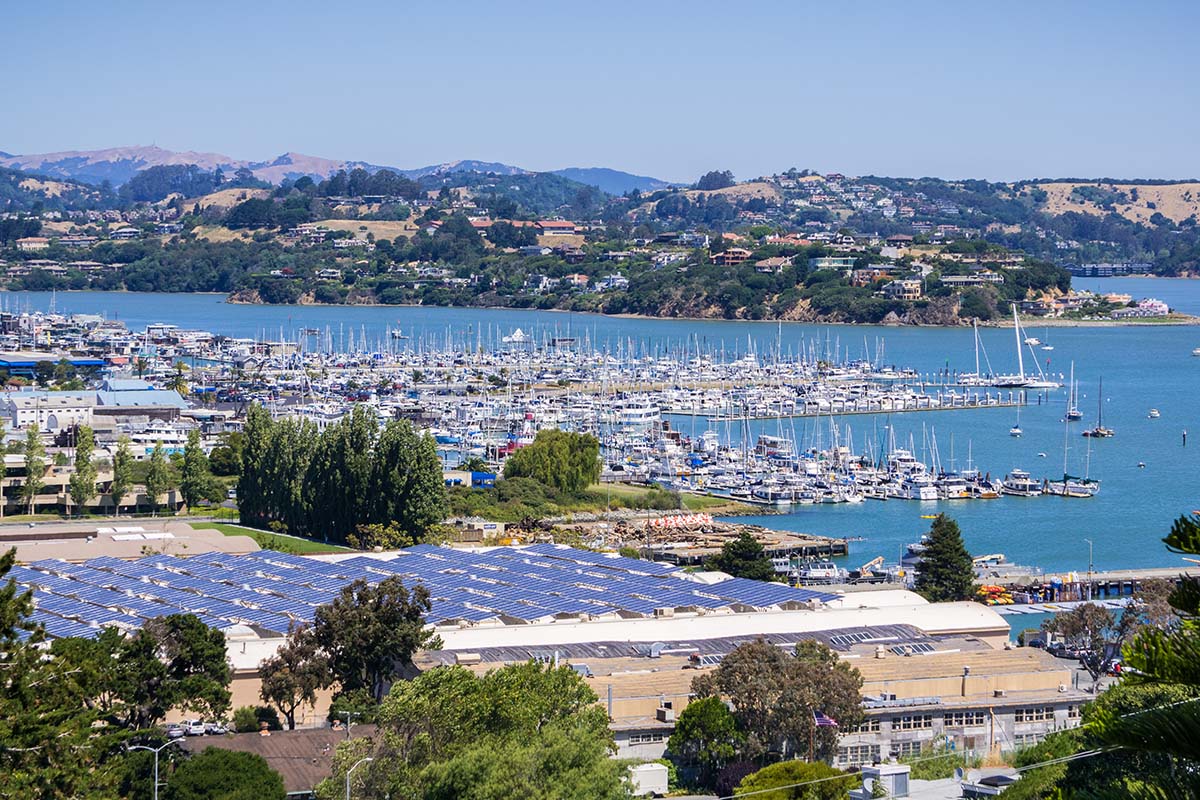
Buying a Marina? Go Green
Published on March 5, 2023Marina buyers have many different reasons for investing in a particular property. Location, the scope of services, current or potential income, or maybe it’s just a property they’ve come to know and love through years of boating. In looking over potential properties, a critical piece should be how environmentally sound the facility and surrounding land is. Know what lurks beneath the water and dirt before signing on the dotted line.
There are obvious visible signs that a marina is incorporating clean practices that can be seen during a site visit. Digging deeper, there are often documents, permits, and plans, that the state or federal government requires a marina to keep on site. Look over a property carefully and ensure any environmental documents are made accessible prior to making a purchase.
Take a Look Around
On the visible side, there are some obvious clues to how a marina operates. Look for plenty of covered trash cans, recycling containers, spill containment equipment, emergency numbers posted, and a pumpout. The upland and the waterfront should be mostly free of trash and debris. A fleet of abandoned boats or an oily sheen in the water should give a buyer pause.
If the facility includes service, pay attention to where activities such as pressure washing, painting, and repairs are conducted. Gone are the days when boats were picked up by a lift and pressure washed while they hung over the basin. Through the years it was found all that paint that came off during pressure washing contained toxic contaminants that needed to be kept from the water. Marinas now at a minimum have a tarp under boats they wash or work on, and many have designated cement pads with filtered runoff areas, or they conduct work inside buildings tailor-made for containing both the visible and airborne pollutants that can come from various types of boat service. If the water in the basin or grass on the ground is the same blue as the upland boat hulls, be concerned.
Ask for Environmental Documentation
Along with a visual inspection, it’s important to see written documentation for items that may be required by state and federal governments.
Marinas sit on waterfront property, which means they are often the last piece of land that all upland rainwater or stormwater flows through before it heads to sea. Being the collecting point of potential contaminants is an unfortunate side of the business, which often means a marina must have a Stormwater Pollution Prevention Plan (SWPPP). An SWPPP is a requirement under the National Pollution Discharge Elimination System program. This plan may be required for a marina to receive a permit to discharge stormwater to surface waters, and if required it needs to be on-site.
Along with the plan, marinas may have in place systems whereby water is collected and filtered, or they may have rain gardens, retention ponds, swales, or a host of other systems and processes to filter out contaminants in the water before it goes into the marina basin. When considering a purchase, ask to see the stormwater plan and make note of what water treatment systems are on-site.
If the marina offers fuel and stores 42,000 gallons of fuel and/or oil in underground tanks on the property or 1,320 gallons above ground, there are requirements under the U.S. Environmental Protection Agency. A Spill, Prevention, Control, and Countermeasure Plan (SPCC) outlines facility-wide actions and activities to prevent and clean up oil and gasoline spills. In addition, many underground storage tanks must be registered by the state and meet requirements for secondary containment and leak alerts.
Waterfront property throughout history was used for commercial purposes because it provided access for shipping. Timber, fuel, chemicals, and all types of potential contaminants may have been sited on the same land where a marina now sits. For this reason, the National Environmental Protection Agency or NEPA often requires businesses, like marinas to have an Environmental Assessment conducted on the property. Depending on the findings, a more complex study, called an Environmental Impact Statement, may be required. In either case, these documents should be readily accessible and available for a potential buyer to view.
There are many nuances across states of what plans and actions a marina must undertake, so if a seller says there was no requirement for an environmental assessment that may be true but dig more and find out why.
Clean Marina Programs
An easy way to assure a marina is not hiding its contaminated past nor doing anything today contrary to common environmentally sound practices is to purchase a marina that is a certified clean marina. Many states have had Clean Marina programs in place for decades and the Association of Marina Industries started its own clean certification program last year. The voluntary programs are a way for marina owners to have a full list of all the regulations, rules, and best management practices for running a legal and environmentally sound facility. A marina that carries a certified clean marina designation has been thoroughly inspected and proven to meet the requirements of the program, which is often run through state environmental offices. It is still important to ask to see any and all required plans and permits, but more than likely a clean marina will have them readily available.
Marina owners overall are proud to be stewards of the environment and take that responsibility as a serious and important part of their job, but there are always exceptions. If green practices and products are not evident and there’s no explanation for why that’s the case, walk away. A marina that sits atop a former dump site, knowingly contaminates its waters, or looks more than a little rough around the edges is probably one to avoid.
| Categories | |
| Tags |





